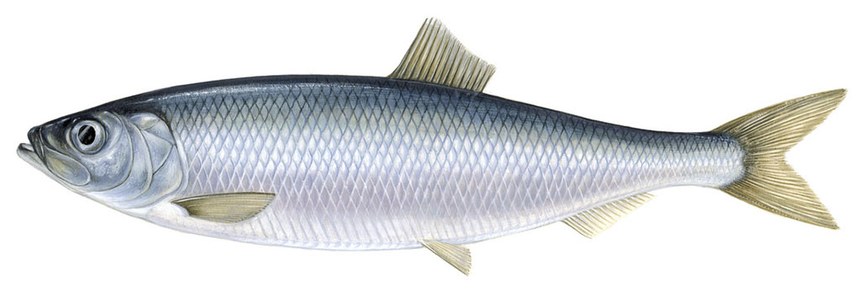Overview
Fisheries are composed of one or more parts, each of which is entitled to receive an MSC certificate. These parts or “units” are defined by their target stock(s), fishing gear type(s) and if relevant vessel type(s), and the fishing fleets or groups of vessels.
When the term “Unit of Certification” is used for fishing units that are in assessment, it refers to the “Unit of Assessment” or “Unit of potential certification”. Expand a status below to view the parts that form this fishery. To check the detailed scope, download the latest certificate or open the Assessments page to get the latest report. Find out more by visiting our page on Fisheries
Catch by Species
| Species | Reported Catch Year | Metric Tonnes |
|---|---|---|
| Atlantic herring (Clupea harengus) | 2017 | 90,831 |
Information is provided by an independent Conformity Assessment Body as live weight (the weight of species at the time of catch, before processing) and where a fishing season covers multiple years, the end year is given as the reported catch year. Additional information is available in the latest report, see the assessments page.
Eligibility, client groups and vessel lists
A fishery may choose to define the members of the fishery certificate. These members can be vessels or other client group members (e.g. companies that own vessels and/or companies that are named as eligible to handle certified product covered within the fishery certificate scope). Please refer to the fishery certificate statement on additional product specific eligibility criteria (e.g. product eligibility limitations, eligibility date, exclusive points of landing and the point where Chain of Custody certificate is required). Please consult the fishery Public Certification Report for product eligibility rationale.
| Documents | Published on | Files |
|---|---|---|
| Vessel List | 30 Dec 2019 | 1 files |
| List of client group members | 16 Jun 2016 | 1 files |
About this Fishery
Herring (Clupea harengus) image © Scandinavian Fishing Year Book
The Atlantic herring is found throughout the continental shelf waters of the North Atlantic, from the Gulf of Maine to the Gulf of St Lawrence off the east coast of North America, around Iceland, and from the Barents Sea to the English Channel and Celtic Sea in the Northeast Atlantic.
Within this total distribution are numerous more-or-less isolated or independent stocks. The largest is the Atlanto-Scandian or Norwegian spring spawning herring stock – one of the world’s most abundant fisheries. It is classified as having full reproductive capacity, with fish caught at a level that would maximise catches over the long-term without reducing the overall abundance of the stock.
The certified fishery comprises five large technologically advanced vessels. They follow the migration of the stock closely as it moves from the wintering and spawning grounds along the Norwegian coast to the summer feeding grounds in the Faroese, Icelandic, Jan Mayen, Svalbard and international areas.
The processing vessel M/S Nordborg is one of the largest and most modern fishing vessels in the North Atlantic. It has a sophisticated production system, which allows the herring to be processed at sea and frozen immediately after.
The fleet uses midwater (pelagic) trawls, or purse seine nets. The purse seine technique involves the setting of a large net around a shoal of fish, closing the bottom of the net to form a “purse”, and then drawing in the net to the vessel.
Neither method has an impact on the seabed. As herring form single-species shoals, bycatch of other species is minimal.
Market Information
Most Faroe Islands herring is landed and sold at auction in Norway. A very limited part of the catch is sold directly to processing plants in Denmark (Skagen), Shetland (Lerwick), Scotland (Peterhead) and Iceland (Neskapusstaður).
